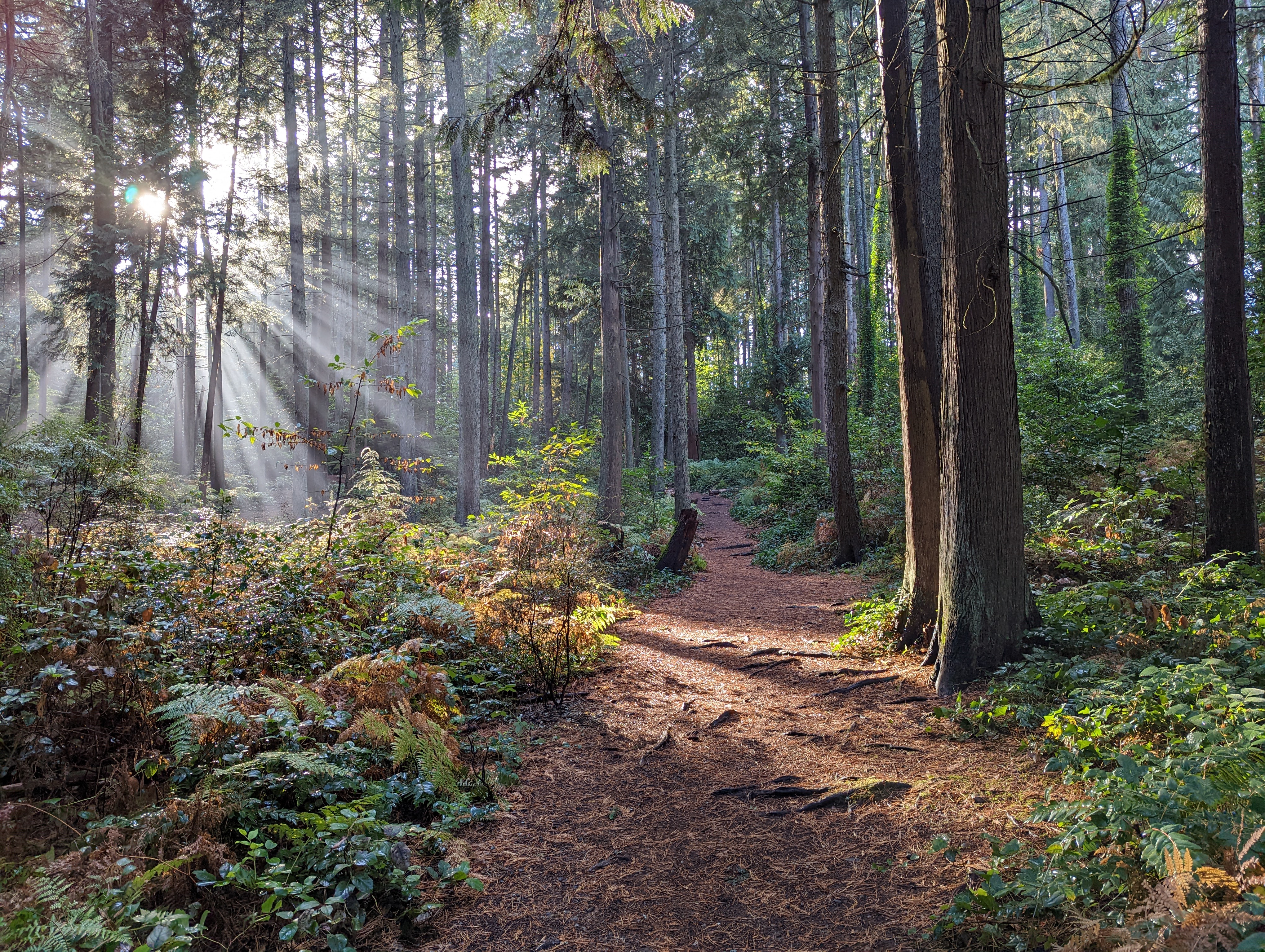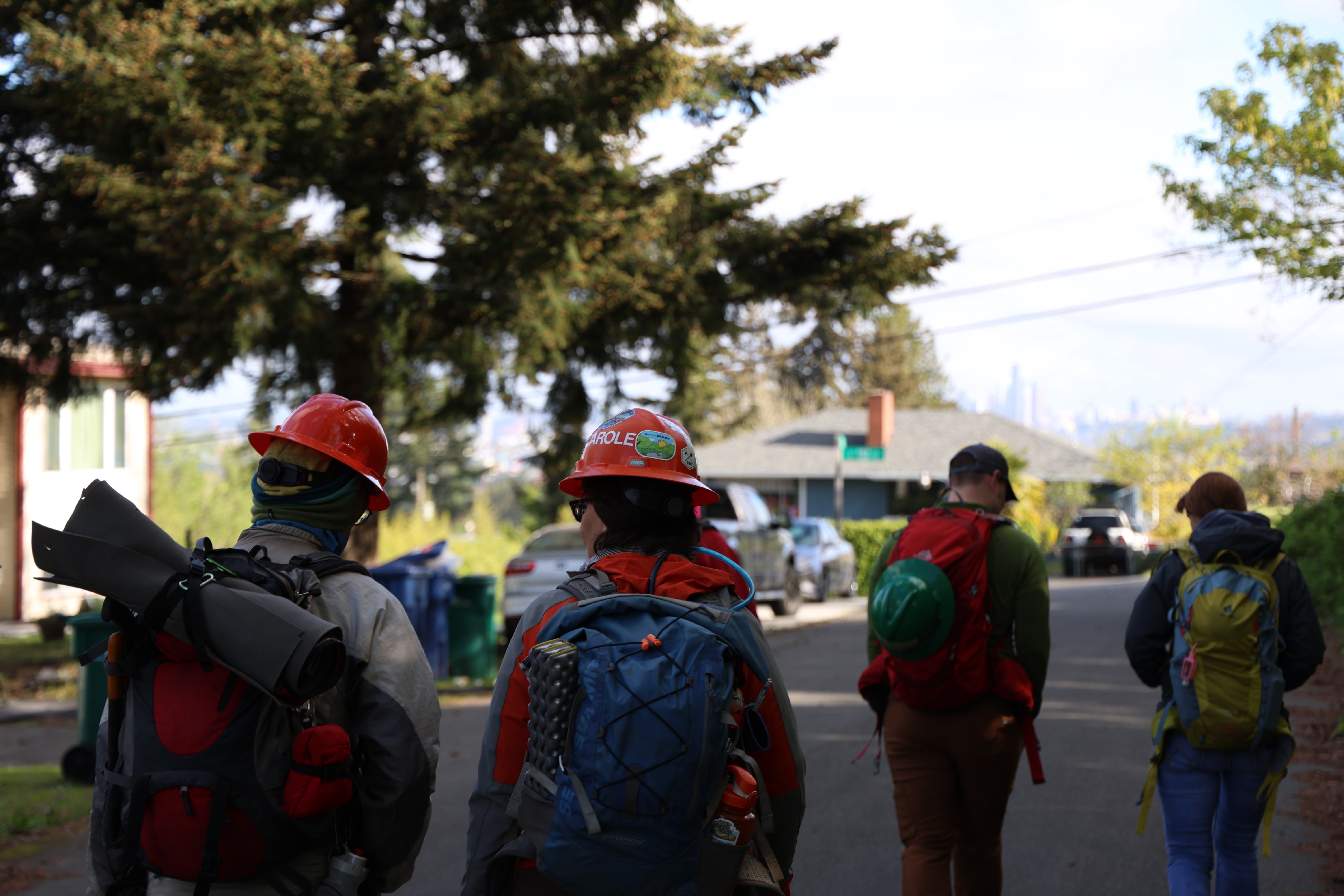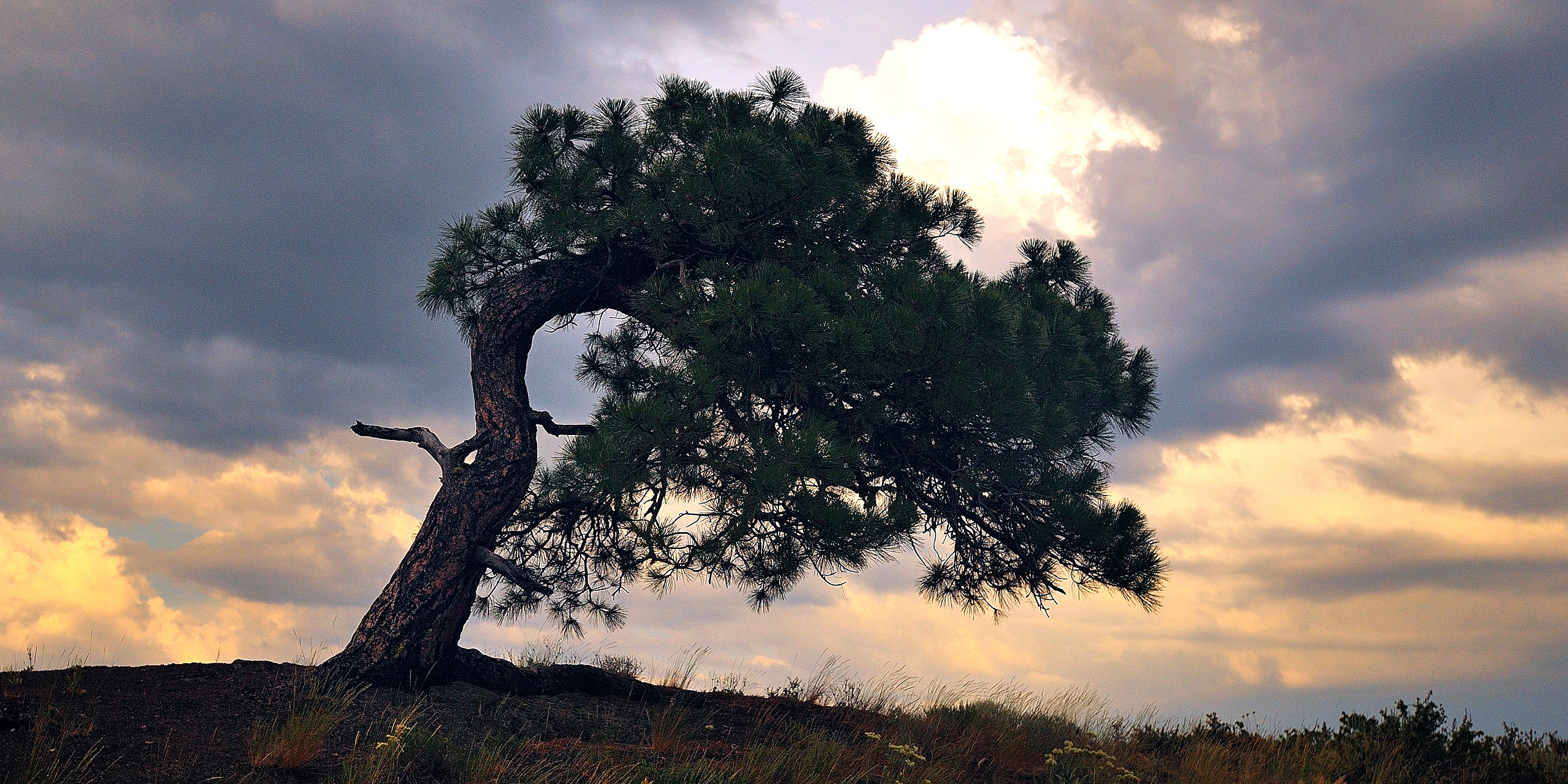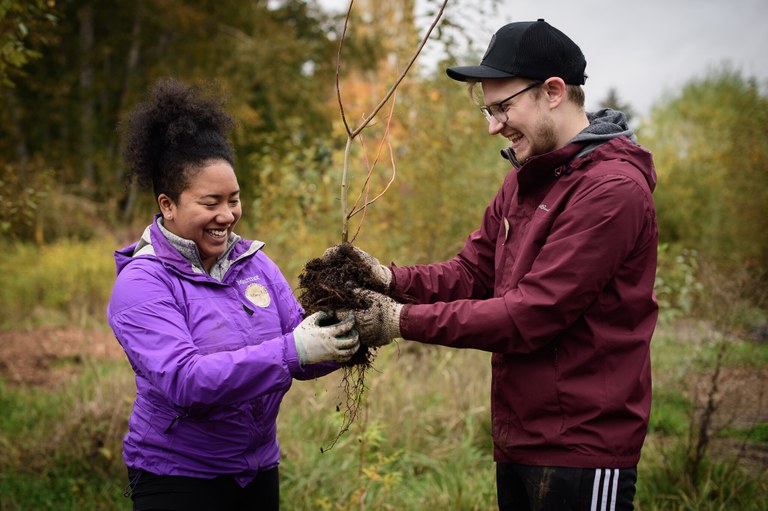Urban forestry and why it matters
Most hikers know that spending time in nature brings an undeniable sense of peace. Whether that’s on your favorite backcountry trail, in your local park or even in your own backyard, natural spaces can provide an escape from life’s everyday stressors.
Spending time amid trees boosts the enjoyment of time spent in nature. But tree do a lot more than that — they sequester carbon, help create the air we breathe, provide shade, mitigate heat, absorb stormwater and create habitat.

An urban forest at Hamlin Park in Shoreline. Photo by Eben Stansbery
Joanna Nelson de Flores is the urban forestry program manager at King County. Her work focuses on urban unincorporated areas of King County like Skyway, White Center and North Highline, which include many lots and smaller pockets of green spaces and many places which have been historically underserved when thinking about creating and maintaining urban forests. One of those areas includes Glendale Forest, a pocket of forest where King County and WTA have partnered over the years to help build a thriving greenspace for the nearby community. Tree canopies, like those provided by the green space at Glendale, bring the benefits of trees to those who live nearby.
“If you were to look down on a tree from above, tree canopy is the amount of ground covered by all the leaves, branches, and stems, “ Joanna said. “The more tree canopy we have the more benefits we have… Parks play an important role in providing tree canopy: not everyone has their own backyard with trees.
The benefits of neighborhood trees, however, are not distributed equally. And many areas are losing tree coverage. This change in canopy coverage is happening for a variety of reasons, including hotter, drier summers, aging tree population, large construction projects for utilities and transportation and general housing growth. In many cities all over the country, canopy loss is not happening equitably, including in Seattle. According to the City of Seattle Canopy Cover Study over 255 acres (roughly the size of Seattle’s Greenlake) of tree canopy were lost from 2016 to 2021 and the neighborhoods impacted by racial and economic injustices not only started with less canopy coverage but lost more than the citywide average. That loss of canopy has real impacts. In Seattle, a 13% increase in canopy coverage is associated with a .5 degree reduction in temperature meaning less tree coverage equates to higher temperatures. And with warmer, more extreme summers, this variation can have huge impacts on both the mental and physical health of individuals in historically underserved areas all over the city.
In Spokane, the importance of tree canopy coverage is just as glaring.
“The wealthiest neighborhoods in Spokane with the highest median income have, in some areas 40% canopy cover and they have temperatures that are up to 14 degrees cooler,” said Amanda Parrish, executive director at the Lands Council in Spokane.
A contributing factor for these disparities is historic redlining, which occurred all over Washington and the United States. Redlining is a discriminatory practice where financial institutions deny or restrict services based on the racial or ethnic makeup of a neighborhood. In the U.S., mortgage lenders outlined urban neighborhoods — and Black-populated neighborhoods in particular — and denied loans to the people living there. The Fair Housing Act of 1968 outlawed racially motivated redlining; however, the impact of these discriminatory practices have lingering implications on communities to this day.
“Historically, redline neighborhoods have the lowest canopy cover and just didn't get that same city investment. If the city was investing to improve parks or do street projects, the areas that were prioritized historically were the more affluent neighborhoods and not these redlined communities,” Amanda said.
Joanna and Amanda and their teams are working to create more equitable urban forests, and counter our nation's dark history of redlining.
“King County’s urban forestry program is highly focused on the areas that have been historically underserved,” Joanna said. “People want to see more trees in their communities.”

WTA volunteer crews on their way to work on trails at Glendale Forest. Photo by Victoria Obermeyer.
She emphasized the importance of planting the right tree species in the right place and giving folks the tools and support they need to help contribute to a thriving urban forest and ensure that their planting is successful. The county helps support communities in a variety of ways, from tree plantings and tree-giveaways, to helping individuals find the best trees to plant on their own property.
For communities all over Washington, urban forests are incredibly important not only for mental health but for physical health and safety, especially in the context of climate change. However, due to the nature of urban areas, these forests might not have the same species that grew in the area historically.
“The urban environment is not a native environment and yet it's such an important part of human establishments,” Amanda said. “Urban forest can look like trees in parks and on soft ground but also trees in the downtown core and sidewalk easements. The trees that are in our neighborhoods are all part of the urban forest.”
An important part of Amanda’s work is considering what trees to plant where and why. For regions like Spokane, the ponderosa pine historically occupied about 80% of forest canopy in the region. While ponderosas are still planted in parts of Spokane and play an important role in the landscape of Spokane (it’s still their city tree), ponderosa’s size and root systems mean they might not work in urban areas, especially those with a lot of power lines or buildings.

A ponderosa pine, Spokane's city tree. Photo by Ari Bixhorn.
Issues like that may require urban foresters to plant non-native species, which still provide the benefits of tree canopies, but work better in an urban environment. For urban forestry restoration projects, Amanda and her team work with the community to plant trees that will work where they’re planted, such as ginkgo and Kentucky cotton trees. Those trees do well with challenges such as sidewalks, roads and powerlines.
As high winds have become more of a challenge in Spokane due to climate change, root systems increasingly factor into the decision of what trees to plant. Tree falls can be especially dangerous in urban environments, where they have a higher risk of falling on homes, businesses or powerlines. That means choosing trees that have solid root systems that are more likely to withstand the pressures of windy urban areas.
From working with schools and educational outreach to providing volunteer opportunities and work programs, Spokane’s tree planting program continues to thrive, and is looking at ways to expand.

Volunteer crews working to help create a thriving urban forest in Spokane. Photo courtesy of Lands Council in Spokane.
“The most time consuming part. It's not planting the trees, but it's watering them. And so, as we scale this project up, we know that we're going to have to have some paid jobs and maintenance, not just relying on citizens, and so we're getting ready to pilot a program with another nonprofit called Career Path Services that has a program called Dignified Workday, and it works with folks that are facing housing insecurity to offer highly paid day jobs.”
Lisa Ciecko, ecology team manager for Seattle City Parks and Recreation, is also working to help create equitable, thriving urban forests in city parks. From creating welcoming spaces to those less familiar with outdoor recreation to reducing impact on fragile ecosystems, Lisa and her team work hard to continue to help Seattle's 100+ miles of trail systems continue to thrive.

A moment of joy while tree planning with Seattle City Parks on Green Seattle Day. Photo by Amy Scarfone, courtesy of Green Seattle Partnership.
“Our work is informed by a changing climate. We’re both trying to build a canopy that can help mitigate heat in the city and also trying to understand how to take care of that canopy moving forward,” Lisa said.
Due to a changing climate, Seattle is experiencing more extreme temperatures and drought conditions in summer and more intense winters. Mitigating these impacts means extending care for newly planted trees and in some cases even planting plants that started their lives in Central Oregon, a location that may indicate a conditions Seattle might experience further down the road based on climate prediction.
“We have a lot good momentum and positive work happening in our forest and park spaces,” Lisa said. She also emphasized the importance of sharing knowledge and providing opportunities for community members to feel a sense of belonging and pride in their urban forests. “Our forests depend on our community and vice versa. If we take care of the forests they take care of us.”

